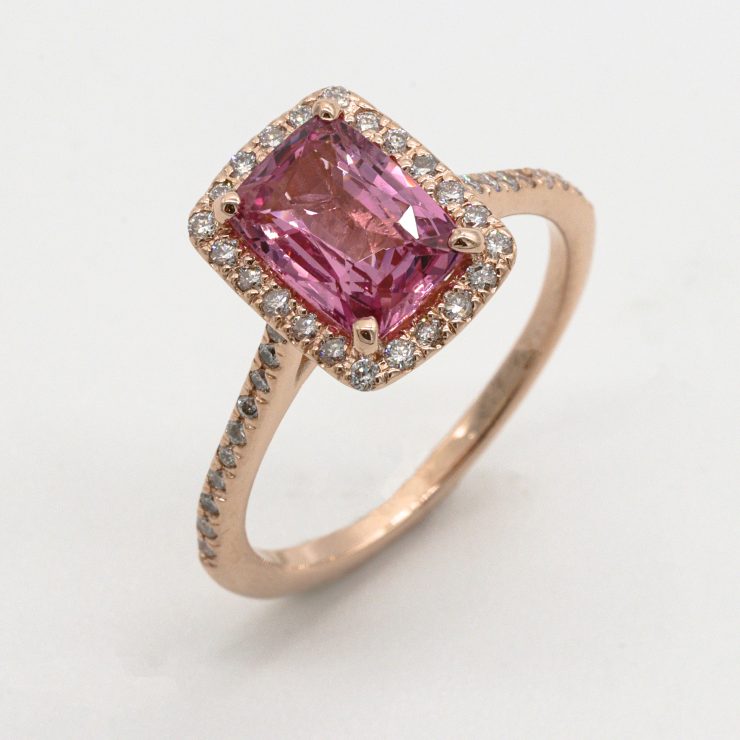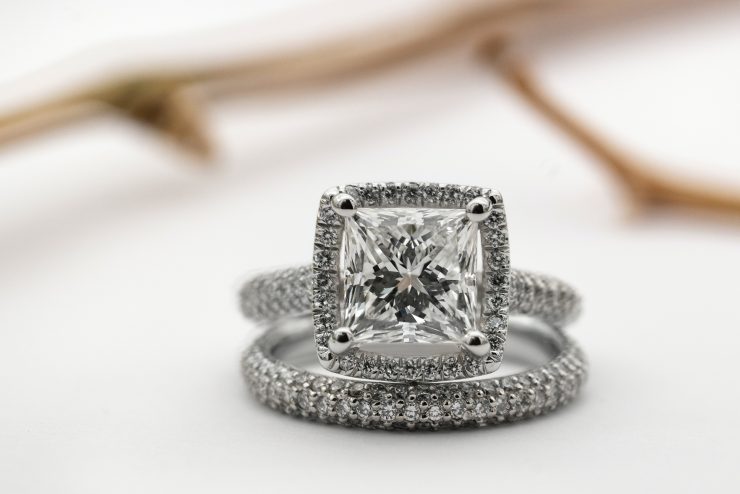Introduction to Lab-Grown Diamonds as an Investment
Lab-grown diamonds have gained substantial attention over the past decade as an alternative to natural diamonds, both in the jewelry market and among investors. These diamonds are chemically, physically, and optically identical to mined diamonds, created in laboratories using advanced technological processes such as High Pressure High Temperature (HPHT) or Chemical Vapor Deposition (CVD). As production technology improves, the cost of creating these diamonds continues to decline, resulting in lower retail prices and wider accessibility. While they have gained popularity due to ethical and environmental considerations, the question remains: do lab-grown diamonds present a solid investment opportunity? When evaluating their potential as an investment, factors such as market demand, technological trends, resale value, and long-term value retention must be carefully considered.

Understanding the Basics of Resale Value
The resale value of lab-grown diamonds is a central point of concern for potential investors. Unlike natural diamonds, which have historically held their value or even appreciated over time, lab-grown diamonds have not demonstrated the same pattern. In most resale scenarios, lab-grown diamonds fetch significantly lower prices than their original purchase value, often reselling for just 20% to 40% of the retail price. This steep depreciation is largely due to rapid technological advancements and increasing supply, which exert downward pressure on prices. Furthermore, the secondhand market for lab-grown diamonds is still developing, and many jewelers are reluctant to buy them back or offer competitive resale prices. Thus, from a purely financial standpoint, lab-grown diamonds currently struggle to match the long-term investment performance seen with their natural counterparts.
Supply Dynamics and Technological Impact
One of the primary forces affecting the investment outlook of lab-grown diamonds is the supply side of the equation. Unlike natural diamonds, which are limited by geological scarcity, lab-grown diamonds can be manufactured in virtually unlimited quantities. As more companies enter the production space and technology continues to reduce manufacturing costs, the market faces the risk of oversupply. Oversupply can severely impact pricing power and diminish the uniqueness that often supports luxury asset valuations. For example, as the cost of producing a one-carat lab-grown diamond continues to drop, resale prices are dragged down as new diamonds can be bought at lower prices. While increased competition may benefit consumers by making diamonds more affordable, it undermines the value proposition from an investment perspective.
Market Demand and Shifting Consumer Behavior
Consumer demand plays a significant role in shaping the investment potential of any commodity, and lab-grown diamonds are no exception. Over the past few years, younger generations—particularly Millennials and Gen Z—have shown growing interest in lab-grown diamonds due to their sustainability, affordability, and ethical appeal. This cultural shift has contributed to a broader acceptance of synthetic stones in mainstream jewelry markets. However, this demand is largely driven by retail consumption rather than by collectors or investors seeking appreciation in value. For lab-grown diamonds to gain serious traction as investment assets, they would need a strong secondary market, supported by buyer interest in used stones. As of now, this market remains underdeveloped, with limited infrastructure to facilitate transactions at fair market value. Consequently, while primary market demand may be rising, the absence of a robust resale ecosystem continues to hinder investment appeal.
The Role of Certification and Grading
Another crucial factor in assessing lab-grown diamonds’ investment potential is the role of certification and grading. Just like natural diamonds, lab-grown stones can be evaluated based on the 4Cs: carat, cut, color, and clarity. Major gemological institutions such as the Gemological Institute of America (GIA) and International Gemological Institute (IGI) now offer grading reports for lab-grown diamonds. These reports ensure transparency and consistency in quality assessment, which is vital for any asset class considered for investment. However, even with standardized certification, buyers remain hesitant about the long-term value of synthetic diamonds. Unlike natural diamonds, which have historical significance, perceived rarity, and emotional resonance, lab-grown diamonds are still regarded as consumer goods rather than appreciating assets. Thus, while certification improves trust and helps in quality comparison, it has not yet translated into significant resale value or speculative interest.

Price Trends and Depreciation Patterns
Tracking price trends over time is essential when evaluating any asset’s investment viability. In the case of lab-grown diamonds, the general trend has been a consistent decline in price per carat as production becomes more cost-efficient and widespread. For example, data from the diamond industry shows that the retail price of lab-grown diamonds has dropped by more than 50% in the past five years alone. This pattern stands in contrast to natural diamonds, whose prices have remained more stable or even appreciated depending on the size, color, and rarity. Investors should be aware that declining prices for new lab-grown diamonds inevitably drag down the value of previously purchased stones. Therefore, anyone looking to buy lab-grown diamonds with the hope of future resale profits may be disappointed, as the asset does not demonstrate the price resilience typically associated with strong investment vehicles.
Comparing Lab-Grown to Natural Diamonds in Investment Terms
When comparing lab-grown diamonds to natural diamonds from an investment standpoint, the differences are significant. Natural diamonds benefit from inherent geological scarcity, historical prestige, and well-established markets for resale, auction, and private sales. They are also often seen as a hedge against inflation or a store of value, particularly during economic downturns. In contrast, lab-grown diamonds lack these investment attributes. While they offer consistent quality and ethical sourcing, they are fundamentally industrial products whose value is tied more to manufacturing costs than to scarcity or market sentiment. Investors seeking capital appreciation or wealth preservation generally favor assets that retain or increase in value over time—an area where lab-grown diamonds currently fall short. Thus, despite their appeal as consumer goods, they are unlikely to supplant natural diamonds as a reliable investment-grade commodity.
The Role of Marketing and Consumer Perception
Marketing plays a pivotal role in shaping consumer perception, and this is especially true in the diamond industry. The lab-grown diamond sector has made significant strides in positioning its products as eco-friendly, conflict-free, and modern alternatives to mined diamonds. These efforts have resonated with environmentally conscious consumers and have helped lab-grown diamonds gain a solid foothold in the engagement ring and fashion jewelry segments. However, when it comes to positioning lab-grown diamonds as investment assets, marketing has faced limitations. The narrative around ethical sourcing and affordability does not easily translate into perceived value retention or appreciation. Additionally, the frequent promotions, discounts, and large retailer markups often associated with lab-grown diamonds reinforce the notion that these items are commodities rather than collectibles or long-term stores of value. Until marketing strategies evolve to emphasize durability of value and resale support, investor confidence will likely remain minimal.
Potential for Market Evolution and Long-Term Outlook
Despite the current challenges, the long-term outlook for lab-grown diamonds may evolve as the market matures. For instance, if the production of lab-grown diamonds reaches a natural equilibrium and technological progress slows, prices could stabilize. Furthermore, the development of robust resale platforms, secondary markets, or even digital exchanges for authenticated lab-grown diamonds could help improve liquidity and transparency. Regulatory changes or consumer protection policies might also enhance investor confidence. In the long run, niche investment markets could emerge, particularly for unique or rare lab-grown stones that exhibit exceptional characteristics or proprietary technologies. However, such developments remain speculative at this stage. For now, lab-grown diamonds should primarily be viewed as ethical, affordable luxury items for personal enjoyment rather than financial instruments for wealth generation or preservation.
Conclusion: A Consumer Choice, Not an Investment Vehicle
In summary, while lab-grown diamonds offer considerable benefits in terms of cost, environmental impact, and ethical sourcing, they currently lack the core attributes that define sound investment assets. Their resale value remains low due to market oversupply, declining prices, and limited infrastructure to support secondary sales. Despite increasing consumer demand, particularly among younger generations, the demand is largely retail-driven and not reflective of speculative or collector interest. Certification and grading systems have enhanced transparency, but they have not substantially influenced resale dynamics. Until the market undergoes significant transformation—such as the development of a liquid and trustworthy secondary marketplace—lab-grown diamonds should be regarded as personal luxury purchases rather than viable investment vehicles.